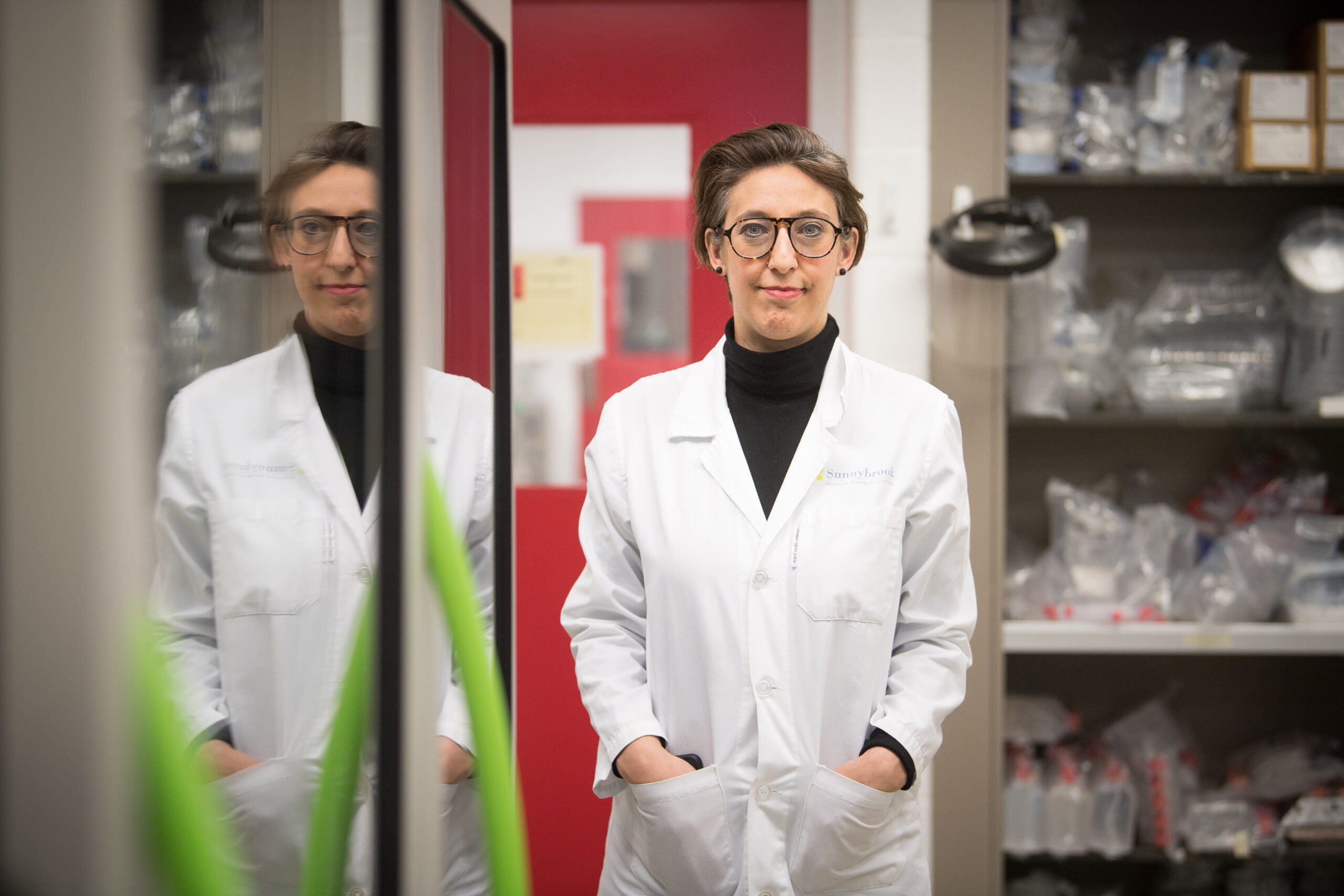Results of the 2024 Ignite Grants Competition
The Emerging and Pandemic Infections Consortium (EPIC) is an integrated network for researchers, trainees and partners working to confront infectious disease challenges. We unite members across the University of Toronto and its hospital partners to accelerate cross-disciplinary work in the understanding and development of new countermeasures against pathogens. A key pillar of EPIC’s work is training the next generation of infectious disease research leaders that will help stop future pandemics and reduce the societal burdens of infectious disease.
EPIC Ignite Grants, formerly called Proof-of-Principle Grants, support early stage and pilot level projects that show promise in developing novel understanding or innovations in the area of infectious disease and/or pandemic preparedness. This funding is intended to be agile and adaptive so that it can be deployed as rapid response funding when needed or provide seed funding within the EPIC community to support a strong pipeline of innovations in infectious disease research.
We are pleased to share the results of our 2024 Ignite Grants competition.
Total investment
Meet our 2024 Ignite Grant recipients
Applied/translational research stream

Aereas Aung
Institute of Biomedical Engineering, Faculty of Applied Science and Engineering
Project title: Enhancing mucosal vaccines through targeted antigen delivery
Project summary
Rapid deployment of vaccines during COVID-19 was critical in curbing the severity of the pandemic. These vaccines successfully generated antibodies within the bloodstream, minimizing COVID symptoms and hospitalizations. However, breakthrough infections amongst the vaccinated were far too frequent. While waning vaccine immunity and viral variants played contributing roles, mounting evidence suggests that current vaccines do not instill sterilizing immunity that eliminates viral transmission. Indeed, vaccines delivered intramuscularly (IM) fail to induce protective antibodies within mucus layers that are often the primary sites of entry for most viruses. To overcome this limitation, vaccines must be directly delivered to mucosal tissues to stimulate antibody responses from nearby lymph nodes, where immune cells reside. A surge of effort has recently been invested to create intranasal (IN) vaccines =that can instill sterilizing protection against respiratory illnesses such as SARS-CoV-2. Yet, whether IN vaccines can outperform traditional IM vaccines is unclear with only two IN vaccines being approved clinically. While improving mucosal immunity is of high priority, more technologies that can enhance the potency of mucosal vaccines are needed. Our recent study suggests that antibody levels can be increased by an order of magnitude if vaccines can be precisely delivered to specific regions within the lymph node. We seek to determine if targeted vaccine delivery can be achieved with IN vaccines to enhance antibody responses in the mucus layer. If successful, our technology will enable current IN vaccines to achieve even more potent immunity, bringing us closer to the goal of eradicating viral transmission.

Michael Fralick
Lunenfeld-Tanenbaum Research Institute
Co-investigator: Kieran Campbell (Lunenfeld-Tanenbaum Research Institute)
Project title: Environmental surveillance in hospitals for antimicrobial resistance patterns (ESHARP): NICU pilot
Project summary
Antimicrobial resistance (AMR) is a significant and growing threat to public health. When microorganisms (such as bacteria) develop and change in ways that make them resistant to previously effective treatments (for example, antibiotics), there can be significant impacts on human health. AMR is particularly problematic in hospitals, where it can impact highly vulnerable patients, such as premature infants in the neonatal intensive care unit. When treating infections in hospitals, healthcare providers look at recent patterns from human test results over the past 1 or 2 years to understand which resistances might be present; this data is provided in reports called antibiograms. However, these antibiograms have limitations, and novel solutions are needed.
Environmental surveillance has emerged as a powerful approach for infectious disease surveillance. Taking swab samples from the floor can provide estimates of infectious disease burden within a wing of a building or ward of a hospital. We propose to conduct a pilot study to collect floor swabs from the neonatal intensive care unit at Mount Sinai Hospital for the surveillance of local AMR prevalences. DNA will be extracted from the floor swabs, and will undergo metagenomic and targeted metagenomic sequencing. Through the sequencing, we will detect antimicrobial resistance genes and organisms of interest. This proposed non-invasive technique will help complement existing antibiograms as a more timely, less invasive, and more spatially refined approach. Environmental AMR surveillance has the potential to provide valuable information for infection control, gauging the risk of specific resistant infections and informing responsible, effective prescribing.
Clinical research stream

Rob Kozak
Sunnybrook Research Institute
Co-investigator: Allison McGeer (Sinai Health)
Project title: IGNITE: Initiating Group A Streptococcal SurveillaNce for Ontario FuTurE
Project summary
Streptococcus pyogenes (“Group A Strep” or GAS) is the 9th leading infectious disease cause of death globally. It accounts for 700 million infections annually, which range in severity from pharyngitis and cellulitis to fatal invasive infections; over 400000 people world-wide die from GAS infections every year. While surveillance systems are in place for invasive GAS (iGAS) there is little known about circulating strains from non-invasive cases (eg. pharyngitis). It is critical to better understand the molecular epidemiology of GAS as the incidence of iGAS has been increasing in Canada throughout the last decade. In 2023 incidence of iGAS was 50% higher than in 2019, and there a no signs of this changing in 2024. Improving our surveillance is an important first step and can provide data that will guide future vaccine development. We propose to characterize circulating non-invasive GAS isolates using whole-genome sequencing as well as develop an assay for wastewater surveillance for GAS. The data generated will describe the distribution of invasive, non-invasive, and carriage
isolates (from wastewater) and allow us to correlate these findings with the epidemiology of iGAS. These data will support the design of on-going surveillance, as well as the development of studies of burden of diSerent iGAS illnesses for vaccine policy development. Importantly, we will create an interdisciplinary coalition and develop a system to create the evidence needed to make the best policy decisions regarding GAS vaccination, and to understand the changing incidence and epidemiology of GAS infections in Ontario.

Allison McGeer
Sinai Health
Co-investigator: Kevin Barker (Trillium Health Partners)
Project title: Characterizing the ‘resistome’ in the healthcare environment as a tool against the ‘silent pandemic’
Project summary
There is an “arms-race” between bacteria and humans. Bacteria develop ways of “resisting” these antimicrobials (aka. antimicrobial resistance [AMR]), and humans develop ways of overcoming these bacterial mechanisms (e.g. alternative antimicrobial, bacterial enzyme inhibitors etc). WHO describes AMR as a “silent pandemic” and one of the top ten most crucial global health problems. AMR is responsible for ~ 1.3 million deaths/year, growing to 30 million by 2050. AMR can result in resistance to most or all antimicrobials, rendering no alternatives. Carbapenems are considered the ‘last resort antibiotics’ for the treatment of severe Gram-negative infections, however, resistance through enzymes referred to as carbapenemases are becoming common. Canada is not exempt from this; CNISP/TIBDN report within Canada, carbapenemases have more than doubled in a few years, and are almost doubling every two years within the Toronto-Peel Region. Within the region, Peel has double the incidence versus Toronto, and Trillium Health Partners (THP) have the second highest incidence within Toronto-Peel.
Bacteria that harbour carbapenemases are detrimental to patient outcomes and drastically affect the economy of healthcare systems. Genetic material containing carbapenemases and additional AMR genes can easily spread between different bacterial species within the same patient, between patients, and from the environment-to-humans. Therefore, early detection and prevention of spread is critical. In a hospital setting, a “resistome” may be one intervention; monitoring and investigating known and novel AMR determinants may act as an early warning system in the hospital environment or patients, allowing early intervention strategies. Most current methods require expertise that is rarely available in a hospital environment. We propose to validate a method of AMR detection using whole genome sequencing technology by our collaborators, THP, the National Microbiology Laboratory (NML), and Public Health Ontario (PHO) to implement in a large community hospital and potentially more remote settings.
Fundamental research stream

William Navarre
Department of Molecular Genetics, Temerty Faculty of Medicine
Co-investigator: Rupert Kaul (University Health Network)
Project title: Improving our understanding of Gardnerella, a largely overlooked bacteria linked to genital inflammation and spread of HIV
Project summary
We are starting new research on Gardnerella, an under-studied type of bacteria that evidence suggests plays a key role in ‘bacterial vaginosis’ (BV). BV occurs when ‘optimal’ lactobacillus bacteria that often predominate in the vagina are replaced by diverse ‘non-optimal’ bacteria including Gardnerella. BV causes inflammation and has been linked to preterm birth and greatly increased susceptibility to acquiring HIV after sex.
Fundamental questions about BV remain unanswered. What causes a previously healthy vaginal environment to switch to one dominated by Gardnerella? How do Gardnerella cause inflammation? How do they adhere to the cells of the vagina? Do different Gardnerella variants have different levels of virulence and abilities to colonize a male partner? Do patients get immunity to Gardnerella after infection? If so, is a vaccine possible?
We ask for funds to assemble the basic research tools needed to answer the questions above. Gardnerella make fibers (pili) on their surfaces that may allow them to adhere to human tissues and we have evidence they are targets of the immune system. They also produce a toxin (vaginolysin) that may directly kill cells and cause inflammation. We believe vaginolysin and pili are excellent candidates for vaccines and therapeutic interventions. Funding will allow us to make antisera against the pili and vaginolysin; and modify Gardnerella to remove pili and vaginolysin. We will mimic infection using cultured human cells and test whether antibodies directed against the pili and vaginolysin can alter the course of infection.

Mario Ostrowski
Unity Health Toronto
Co-investigator: Vitaliy Matveev (University of Toronto)
Project title: Harnessing the PIWI pathway to silence HIV
Project summary
Latently infected immune cells in people with HIV are the main obstacle to cure despite improved treatment because this virus can integrate its genes into our DNA. We will attempt to silence such integrated HIV by harnessing a molecular pathway that our cells evolved against genomic intruders like HIV. This pathway consists of PIWI proteins and their guide molecules called piRNA. This duo can recognise, tag, and permanently silence genes of molecular invaders, such as endogenous retroviruses, and degrade their products. Information about potential targets for PIWI-mediated destruction is stored in our DNA in the form of piRNA clusters — essentially a ‘list of potential invaders’. We hypothesize that the PIWI pathway could be harnessed for use against HIV in several different ways by targeting the viral genes in latently infected immune cells with synthetic anti-HIV piRNA, and by programming piRNA clusters to produce ‘natural’ anti-HIV piRNA. As a proof of concept, we will use synthetic piRNA to target a T cell line called J-Lat that harbours HIV genes along with a gene of green fluorescent protein (GFP). By targeting GFP, we can measure changes in the amount of light it emits when the HIV genes are active. We have already achieved some initial success with this approach. The next step would be to introduce a GFP sequence into an active piRNA cluster and let the cell produce its own anti-GFP piRNA. If successful, we will then test the most promising anti-HIV piRNA candidates in a similar manner.
Population, global and public health research stream

Shaun Morris
Hospital for Sick Children
Co-investigator: Peter Gill (Hospital for Sick Children)
Project title: Enhancing pandemic preparedness through improved severe acute respiratory infection (SARI) surveillance: Data driven machine learning to develop new pediatric case definitions
Project summary
New and emerging respiratory infections and/or outbreaks are frequently first identified with increasing cases of severe acute respiratory infection (SARI) even before a specific pathogen is identified. In 2011, the World Health Organization (WHO) developed a definition of SARI to standardize clinical and epidemiological surveillance and to monitor trends over time and between regions. The WHO SARI definition is intended for use in all ages, however, it was developed using data from adults and the diagnostic performance of SARI in infants and children is not well understood. Given infants and children are often disproportionally affected by viral respiratory infections, they are an important part of the populations for surveillance for early detection of new and emerging infections. A pediatric SARI definition, developed with data from infants and children, is urgently needed to ensure comprehensive surveillance across the age span.
This study has three main aims. One, we will systematically review all existing surveillance definitions for acute respiratory infections. Two, we will determine how well these definitions work in infants and children. Three, using machine learning and data from a full year of children admited to the Hospital for Sick Children (SickKids), we will develop new data driven case definitions for SARI in infants and children. The outcome of this study will be new pediatric SARI definitions that will improve national and global surveillance for new and emerging respiratory infections of pandemic potential.

Beate Sander
University Health Network
Co-investigator: Tiffany Fitzpatrick (Public Health Ontario)
Project title: Comparing the accuracy of different statistical frameworks for understanding between public health unit mobility in Ontario: establishing the foundation for the development of novel infectious disease metapopulation models
Project summary
Metapopulation models are an emerging method for incorporating important community-level differences, such as sociodemographics, social contact patterns, disease burden, and seasonality, into mathematical models of infectious diseases. Despite gaining attention for their ability to offer valuable insights during the COVID-19 pandemic, particularly in the United States and Europe, these methods have received limited attention to date in Canada. However, a crucial first step to developing these models is identifying an appropriate framework for incorporating between-community mobility patterns. There are many options available, and the choice of framework has significant implicants for a model’s epidemiological accuracy.
Our objective is to compare the ability of two common statistical models (i.e., gravity, radiation) to accurately capture travel patterns between Ontario’s 34 public health units (PHUs). We will compare model-based estimates of between-PHU travel frequency to empiric de-identified 2021 Census data capturing workplace mobility using common statistical measures of agreement (e.g., percent agreement, Cohen’s kappa), reliability (e.g., interclass correlation coefficients), and accuracy (e.g., root mean squared error).
This research will provide a foundation for the development of infectious disease metapopulations and local Canadian capacity in this emerging methodological area. Most immediately, this will support our team’s planned work to develop a new metapopulation model for respiratory syncytial virus (RSV) to support the evidence-informed selection of emerging immunization strategies to reduce RSV disease in infancy. However, this work also offers a foundation for developing metapopulation models for other infectious diseases (e.g., measles, emerging viruses of pandemic potential) and may be replicated in other provinces/territories.
Previous competition results
Stories
EPIC announces recipients of 2024 Ignite Grants
June 20, 2024





